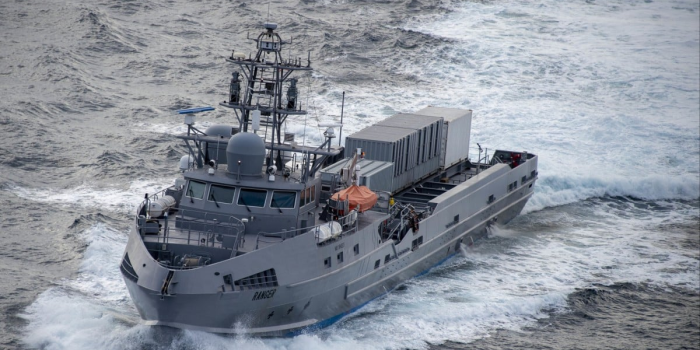In a strategic move to counter China’s growing influence in the northwestern Pacific region, the US Navy has dispatched two unmanned surface vessels (USVs), or drone ships, to its base in Japan. This marks a significant shift in the use of drone ships in naval combat and hints at their expanding role in the near future.
Unmanned aerial vehicles (UAVs), commonly known as aerial drones, went through a similar transformative phase, becoming essential tools in contemporary warfare. Recent examples include the deployment of aerial drones to counter Russian aggression in Ukraine. Advancements in technology have made USVs increasingly autonomous, surpassing their aerial counterparts introduced more than two decades ago. In response to China’s formidable shipbuilding capabilities, with 425 active warships as of August this year, the US Navy is turning to USVs to enhance its maritime presence.

According to a South China Morning Post (SCMP) report, the US Navy has ambitious plans to grow its fleet to 523 ships in the next two decades, with 150 ships expected to be USVs. Two USVs, Mariner and Ranger, part of the US Third Fleet, were dispatched from California to Yosusaka, Japan, the headquarters of the US Seventh Fleet. This marks the first time US drone ships have ventured so far from American shores, escorted by the Arleigh Burke-class guided-missile destroyer USS Shoup. These USVs are equipped with the US Navy’s Standard Missile-6, which provides defense against aerial attacks, terminal ballistic missiles, and strike capabilities.
Before they arrived in Japan, these USVs engaged in training exercises alongside smaller US Navy USVs, Hunter and Sea Hawk, at Pearl Harbor. Experts view the US decision to introduce drone ships in the region as a deterrent against potential Chinese aggression in Taiwan. While Western nations do not officially recognize Taiwan as an independent country, they oppose its annexation by force and have pledged support for its defense. The deployment of drone ships and increased naval presence is aimed at discouraging China from pursuing such actions.

On the other hand, China has revealed its plans to develop an uncrewed combat surface vessel (UCSV) with a range of 4,000 nautical miles. A prototype of this vessel was unveiled earlier this year. Moreover, military experts suggest that Taiwan could bolster its defense using explosive USVs that require satellite-based navigation. Although Taiwan lacks its satellite network for deployment, third-party providers already working with the US Navy could offer support.
As autonomous vehicles become more self-reliant, the stage is set for a future scenario of drone versus drone combat at sea in the northwestern Pacific.


